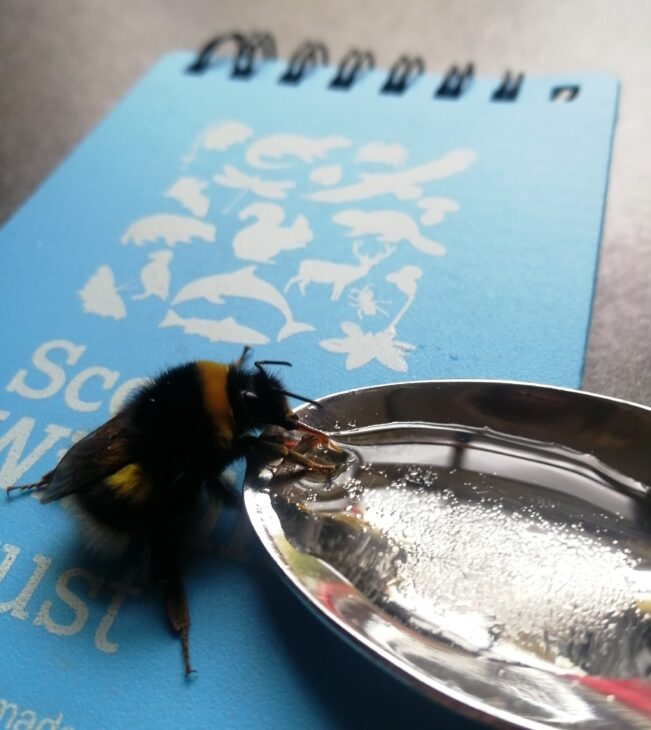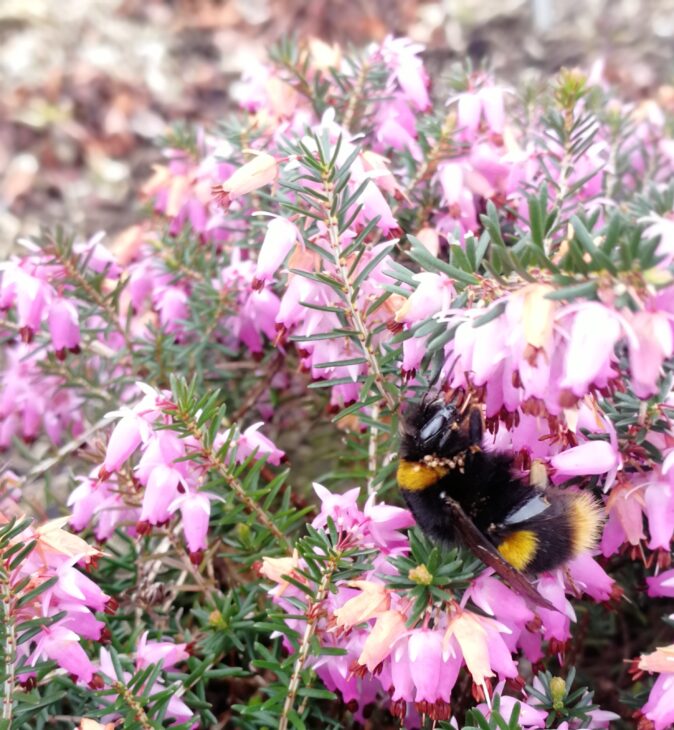The Do’s and Don’ts of Bee Thirst Aid
With the weather becoming progressively warmer we are starting to see several bumblebees emerge. Often, new queen bees are the first to emerge, and will spend their first few weeks drinking nectar to gain strength. After this they will start looking to create their own nest. This can be a risky business, as the weather is somewhat temperamental (indeed, it was snowing here at the Falls yesterday) and nectar rich flowers can be difficult to come by.
Last week I came across a queen that was lying on the ground, seemingly exhausted. As there were no nectar rich flowers nearby, I decided to give her a helping hand. I made up a solution of one third warm water and two thirds white sugar (it is important not to use honey instead of sugar, as this can spread disease), which she began eagerly lapping up as soon as I placed it next to her.

This technique works very well as a short-term energy boost for bees, which will allow them to get airborne and back to their busy business. However, this should be left as a last resort, as sugar water is the equivalent of bee junk food. There has been talk recently on social media of leaving bowls of sugar water out in gardens to “help” boost bee populations. Unfortunately, this would have the opposite effect, as a permanent source of sugar water discourages bees from foraging for healthier foods (imagine a fast food restaurant has just set up outside your house, constantly giving away free food. It might become an easy option for mealtimes!)

If you have a garden and would like to help keep our bee population healthy, the best thing to do is plant nectar rich flowers with a range of flowering times. The Bumblebee Conservation Trust offers some great advice on gardening for bees. Creating wildflower areas in your garden will mean that bees are less likely to become exhausted during the colder months.
Becca Wilson
Falls of Clyde Seasonal Ranger
Help protect Scotland’s wildlife
Our work to save Scotland’s wildlife is made possible thanks to the generosity of our members and supporters.
Join today from just £3 a month to help protect the species you love.
Preface
With the weather becoming progressively warmer we are starting to see several bumblebees emerge. Often, new queen bees are the first to emerge, and will spend their first few weeks …
